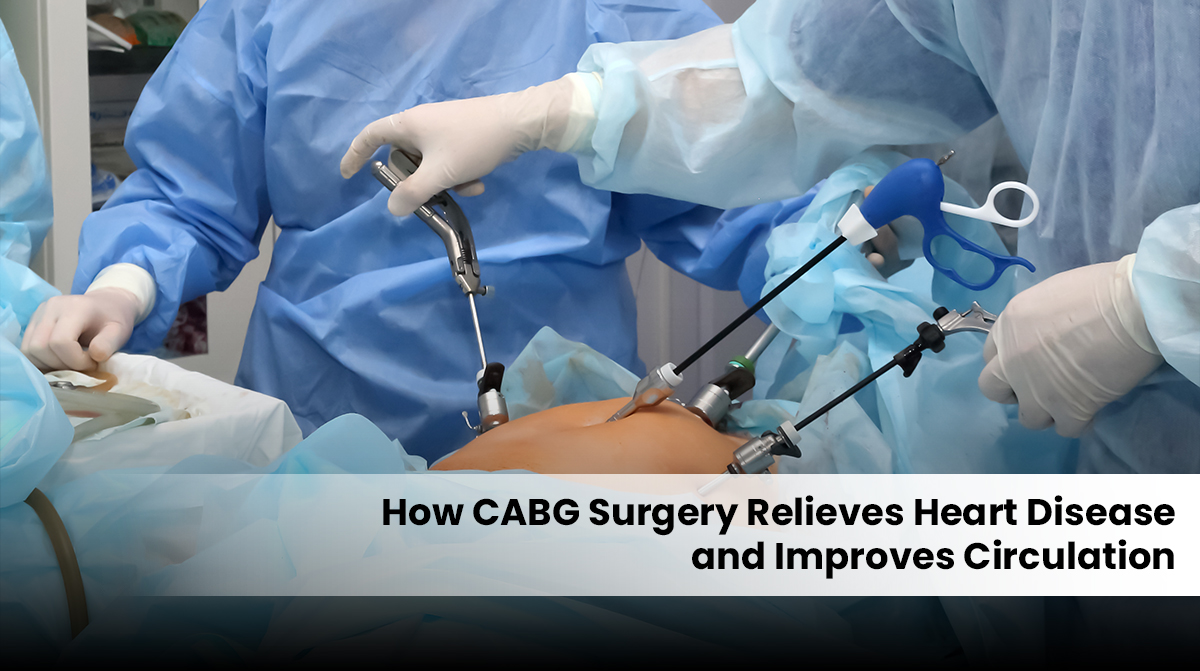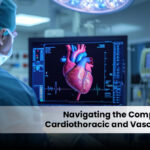
The medical world has achieved a significant breakthrough through coronary artery bypass graft surgery, professionally known as CABG (“cabbage”). Every year, hundreds of individuals with serious coronary heart disease benefit from this life-saving surgery. Plaque buildup makes cardiac arteries narrow or block totally, which prevents heart muscle cells from getting sufficient oxygen and blood supply. The surgical procedure uses alternate blood vessels to create detours around hazardous cardiac regions. The article presents a detailed description of how remarkable treatment improves heart disease symptoms while boosting blood circulation in all body parts. Patients with their families will know better about surgery progress and resultant dramatic life quality improvement through these understanding concepts.
1. Creating New Pathways Around Blockages
The idea behind CABG surgery is really straightforward: provide a detour if a route is closed. Surgeons remove healthy blood arteries from another area of the body, usually the arm, leg, or chest, during the treatment. After that, these vessels—known as grafts—are carefully affixed to form new blood vessels. The aorta, the heart’s major artery, is sewed to one end of the graft, and the coronary artery beyond the obstruction is connected to the other end. The formerly deprived cardiac muscle may now get oxygen-rich blood freely thanks to this new channel.
2. Immediate Relief of Oxygen Deprivation
For heart muscle cells to work correctly, oxygen must be present at all times. Angina, a type of chest discomfort, is brought on by oxygen deprivation in these cells when coronary arteries constrict or get clogged. This condition significantly improves within hours following a successful CABG procedure. Freshly oxygenated blood travels to previously deprive cardiac areas as new blood routes open. Many patients remark that the excruciating chest discomfort that had restricted their everyday activities has almost instantly subsided. Heart cells swiftly exploit the newly available oxygen to return to normal function, which causes this speedy improvement. The “energy crisis” in the cardiac muscle is successfully resolved by the operation.
3. Preventing Heart Attack Damage
When blood flow to a section of the heart muscle stops entirely, the tissue dies and a heart attack happens. In order to stop this terrible harm, CABG surgery is essential. The method directly targets the underlying cause of heart attacks before they occur by restoring blood flow to parts of the heart that are susceptible. The novel bypass graft surgery makes sure that there are other ways to get blood to the heart muscle even if an artery keeps narrowing. This blood supply redundancy acts as a kind of insurance against upcoming bottlenecks. Furthermore, after the appropriate blood supply is restored, heart muscle regions that have been damaged but not killed by previous mild heart attacks can regain their power.
4. Improving Heart Pumping Efficiency
The heart behaves like other pumps by needing energy for proper operation. Heart muscle contraction remains impaired when coronary arteries become blocked, resulting in reduced heart pumping uniformity. The heart achieves major performance increases in essential functions through CABG surgery. Weakened cardiac muscle regains strength as freshly oxygenated blood passes through bypass grafts. The expansion of cardiac output occurs when heart chambers perform better filling and emptying processes. The increase in heart pumping efficiency provides patients with heart failure symptoms relief through better respiratory and physical activity tolerance.
5. Reducing Dependency on Medications
Before CABG surgery, physicians prescribe multiple drugs which help their heart disease patients manage their symptoms and prevent potential heart attacks. The medical treatment includes blood thinners to prevent clotting and beta-blockers for reducing heart strain, while nitrates provide relief from chest pain. Many individuals report a pleasant decrease in their drug needs after successful bypass surgery. The need for medications that artificially increase blood flow frequently decreases as circulation spontaneously improves as a result of the new bypass grafts. Beyond convenience, there are also advantages to this pharmaceutical burden reduction: fewer pills translate into fewer side effects, cheaper pharmacy expenses, and a lesser chance of drug interactions. Many patients value the easier medication schedule that frequently follows successful CABG surgery, even though some cardiac drugs may still be required, especially those that address risk factors like high blood pressure or cholesterol.
6. Enhancing Overall Circulation Beyond the Heart
Although CABG mainly treats coronary arteries, the circulatory system as a whole benefits from treatment. All bodily tissues receive better blood supply when the heart pumps more effectively following bypass surgery. Many patients may not immediately anticipate the wide-ranging advantages of this whole-body circulation augmentation. Blood flow to the brain improves both vertigo reduction and mental clarity. Better blood pressure outcomes can possibly result from enhanced kidney blood filtering abilities, which stem from increased kidney blood flow. Excessive oxygen supply to muscles brings about reduced physical fatigue. Improved circulation to small blood vessels may even make skin seem healthier. As peripheral circulation improves, some patients report feeling warmer hands and feet. These systemic effects demonstrate how CABG surgery improves the function of the complete cardiovascular system rather than merely fixing the heart.
7. Long-Term Disease Progression Slowdown
In addition to treating blockage issues right away, CABG surgery can actually delay the long-term evolution of coronary artery disease. Although bypass grafts open up new blood vessels, they don’t treat the underlying illness that led to the initial obstructions. However, following surgery, a number of variables decrease the course of the condition. First, the majority of CABG patients usually take disease-modifying drugs like statins and undergo extensive lifestyle change instruction. Second, routine follow-up treatment ensures early detection of any newly emerging issues. Third, further damage may be slowed by the bypass’s decreased strain on the native coronary arteries.
8. Psychological Benefits and Quality of Life Improvement
The psychological advantages of successful CABG surgery are arguably the most significant but least well-known. Many patients have a persistent dread of having a heart attack prior to surgery, which causes them to limit their activities and feel anxious if they feel a slight discomfort in their chest. Bypass grafts, which restore normal blood flow, frequently relieve patients of this anxiety and enable them to confidently return to their regular activities. Patients with heart disease may experience depression, which often goes away when physical symptoms subside, and activity levels rise. As patients recover the energy to fully engage in family life, relationships frequently get stronger. A feeling of identity and purpose that may have been lost due to chronic heart disease is restored when one is able to resume a job, hobbies, and social activities. Although less quantifiable than increased blood flow, this psychological rejuvenation is one of the most significant advantages of CABG surgery for general quality of life.
Conclusion
Several decades after its creation, coronary CABG bypass surgery in Gurgaon is still a life-saving and life-improving medical miracle. CABG surgery treats heart disease on several levels by establishing new blood flow channels, avoiding heart attacks, increasing cardiac efficiency, decreasing drug dependence, improving circulation overall, delaying the evolution of the illness, and raising psychological well-being. Although the technique itself concentrates on the mechanical issue of forming diversions around obstructions, its advantages go way beyond this straightforward idea and affect almost every facet of a patient’s health and welfare.


